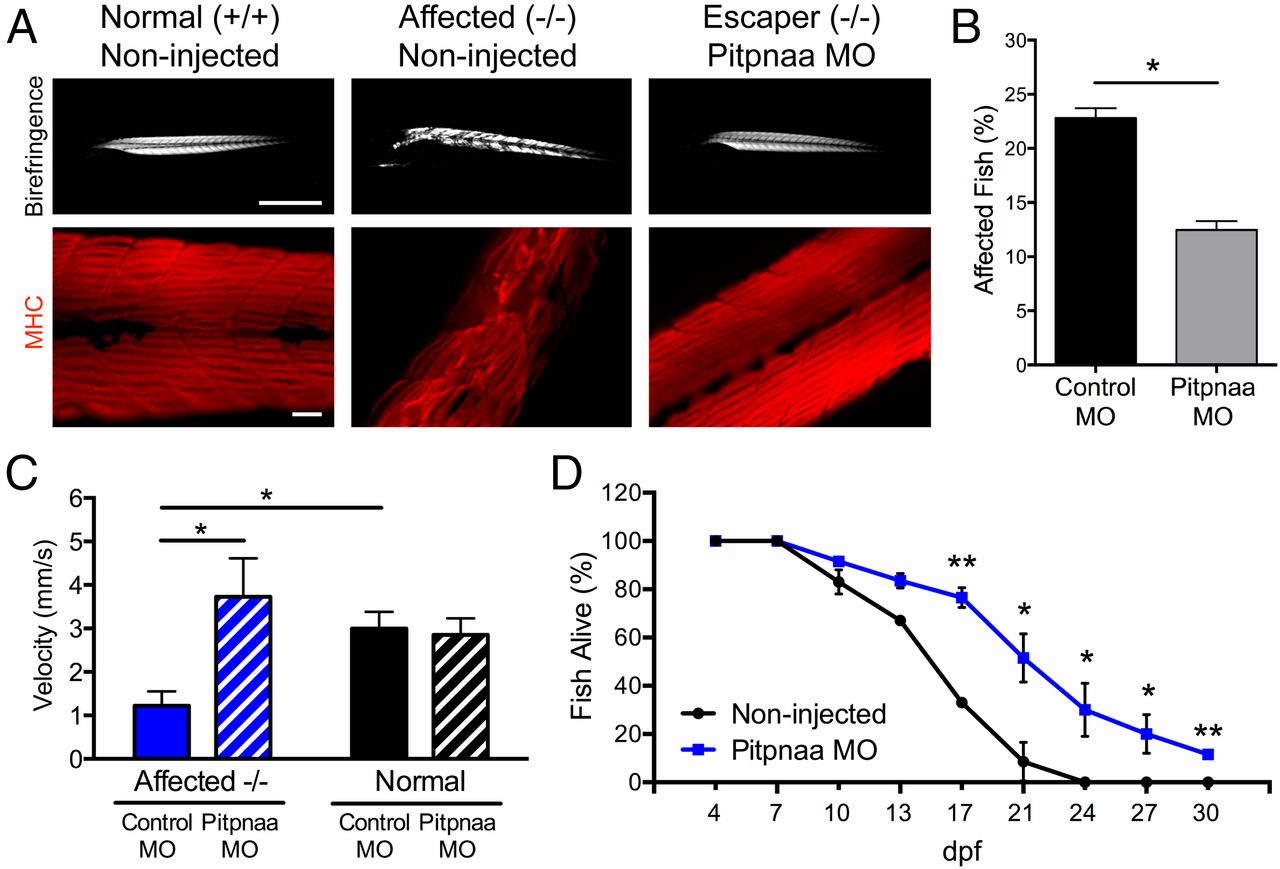Fig. 3
Pitpnaa knockdown rescues sapje zebrafish muscle phenotype, improves swim velocity, and increases long-term survival. (A) Birefringence assay (Upper) and immunofluorescent staining for myosin heavy chain (Lower) showing the typical abnormal muscle phenotype of affected homozygous-null sapje fish at 4 dpf. Injection of pitpnaa MO at the one-cell stage prevented manifestation of the muscle phenotype in some homozygous-null fish, termed escaper fish, which showed healthy muscle morphology comparable to normal fish. [Scale bars: 1 mm (Upper), 100 ?m (Lower).] (B) Percent of affected sapje fish as determined by birefringence assay at 4 dpf. Mating of heterozygous sapje fish normally yields ?25% of affected embryos. Cohorts injected with 1 ng of pitpnaa MO at the one-cell stage showed significantly lower percentages of affected fish compared with control MO. Ten replicate experiments were performed, n = 200?300 per replicate. Bars represent means ± SDM. *P < 0.0001 by Student?s t test. (C) Swim velocity of sapje fish tracked on the DanioVision system. Injection with 1 ng of pitpnaa MO increased swim velocity of affected fish during a 15-min tracking period performed at 4 dpf. Bars represent means ± SEM; *P < 0.05 by two-way ANOVA and Bonferroni post hoc test. (D) Long-term survival assay showing increased survival of affected fish injected with 1 ng of pitpnaa MO at the one-cell stage. Affected fish were identified by birefringence assay at 4 dpf and followed until 30 dpf. Data represent means ± SDM. *P < 0.05, **P < 0.002 versus noninjected by Student?s t test.

